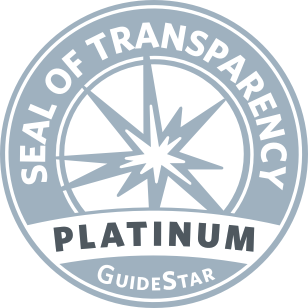The low FODMAP diet can be tailored to meet an individual’s lifestyle and preferences. Following the low FODMAP approach does not cure IBS, but allows successful drug-free management of symptoms through diet in many patients.
An Australian research team developed a dietary management approach – the Low FODMAP diet – to control symptoms associated with irritable bowel syndrome (IBS).
In Australia, the low FODMAP diet is increasingly accepted as the primary management strategy for IBS, recently adopted by their National Therapeutic Guidelines.
A wide range of therapies has been used to control IBS symptoms including various medications, bulking agents and laxatives, and a myriad of lifestyle changes. Most people with IBS believe that their symptoms are related to the consumption of certain foods, but advice in this area has been conflicting and confusing and offered little relief for IBS sufferers.
Important to Note – The Diet Requires Expert Guidance
-
- A wide number of health benefits have been attributed to some FODMAPs, which stimulate the growth of beneficial bacteria in the gut.
- The “Low FODMAP diet” is not a “No FODMAP diet” and it is not a “lifetime diet.”
- The low FODMAP diet requires the expert guidance of a Registered Dietitian trained in the area.
- After 6–8 weeks on the diet, review your progress with the Dietitian who will advise which foods (and how much) can be gradually re-introduced into your diet.
- FODMAPs are found in everyday foods such as certain fruits, vegetables, dairy products, grains, nuts, legumes and some processed foods.
- High FODMAP foods are not “bad” nor are low FODMAP foods the only “good” foods to eat. In fact, many high FODMAP foods are healthy foods.
What are FODMAPs?
FODMAP is an acronym for Fermentable Oligosaccharides, Disaccharides, Monosaccharides and Polyols. This stands for foods that are:
Fermentable – Gas producing
Oligosaccharides – Few simple sugars linked together (fructans, galactans)
Disaccharides – Double sugar (lactose)
Monosaccharides – Single sugar (fructose) And
Polyols – Sugar alcohols (sorbitol, mannitol, isomalt, xylitol, glycerol)
FODMAPs are short-chain carbohydrates (sugars and fibers) that are often poorly absorbed in the small intestine and delivered to the colon and are rapidly fermented by bacteria in the gut. This may cause gastrointestinal (GI) symptoms such as bloating (buildup of gas in the intestines), gas (flatulence) and abdominal pain (Pain varying from dull to sharp that occurs inside the stomach or intestines) for some people.
Oligosaccharides
These comprise fructans (fructo-oligosaccharides or FOS), which are made up of short chains of fructose with glucose on the end, and galacto-oligosaccharides (GOS), which are short chains of sucrose and galactose units. These oligosaccharides are unable to be digested as humans do not have enzymes to break them down. Hence, they are not absorbed in the small intestine by anyone and, therefore, can cause problems for all patients with irritable bowel syndrome (IBS).
Polyols
These are sugar alcohols and the most common ones in the diet are sorbitol and mannitol. Because their absorption is slow across the intestinal barrier, only about one-third of what is consumed is actually absorbed. Because of this, sorbitol is often used as a low-calorie sweetener in “sugar-free” products, especially candies and chewing gum.
Excess fructose
Fructose is a simple sugar and requires no digestion. However, the absorption of fructose relies on the activity of sugar transporters that are located in the wall of the small intestine. Fructose is absorbed in two different ways, all depending on how much glucose is present in a food.
Firstly, if glucose is present in equal or greater amounts than fructose, the glucose seems to piggyback the fructose across the small intestinal barrier.
Secondly, if fructose is in excess of glucose, it requires an alternative absorption method. This method of absorption is impaired in some individuals and is the cause of fructose malabsorption. Around 30–40% of healthy and IBS individuals malabsorb excess fructose.
Lactose
Lactose is a disaccharide, made up of two sugar units. It needs to be broken down into individual sugar units by an enzyme called lactase prior to absorption. Hence, lactose is only a FODMAP when there are insufficient levels of lactase, which can be influenced by factors such as genetics, ethnicity (almost 100% of Asians and American Indians have low lactase levels), and many gut disorders.
What have studies shown about the Low FODMAP Diet Approach?
A pilot study first observed that three out of four patients with IBS responded symptomatically to restriction of FODMAP intake. Subsequently, several high-quality clinical studies have further confirmed that improvement is due to the reduction in FODMAP intake.
The application of the low FODMAP diet is not only limited to IBS. It has also been shown to improve gut symptoms in more than 50% of patients with inflammatory bowel disease (IBD) who are experiencing ongoing gut symptoms despite having inactive disease. In patients without a colon, the issue of frequent loose stool production was also reduced significantly.
High FODMAP Containing Foods
FODMAPs are found in a wide range of foods, but the list below provides an example of foods that are “high” in FODMAPs.
Note that this list is not exhaustive and that all products used in this analysis were sampled from foods commonly consumed in Australia.
Food products from other countries may yield different FODMAP results, due to differences in food processing or the nature of the ingredients.
- Excess Fructose
- Fruits: Apples, cherries, mango, pears, tinned fruit in natural fruit juice, watermelon, large quantities of fruit juice, or dried fruit
- Vegetables: Asparagus, artichokes, sugar snap peas
- Sugars: Honey, high fructose corn syrup
- Lactose
- Milk & Yogurts: Regular and low-fat milk and yogurts
- Dairy Products: Soft cheeses (e.g. ricotta, cottage, cream cheese); custard, ice-cream
- Fructans (fructo-oligosaccharides) & Galacto-oligosaccharides
- Grains: Rye and rye products (e.g. rye bread, rye crackers); Wheat and wheat products (e.g. wheat bread, pasta, couscous, wheat bran)
- Fruits: Peaches, perisummon, watermelon
- Vegetables: Artichokes, legumes (e.g. baked beans, lentils, red kidney beans); onion and garlic and garlic salts, etc.
- Others: Inulin (often called fiber in nutritional supplements and products)
- Polyols- Sorbitol
- Fruits: Apples, apricots, pears, blackberries, nectarines, plums
- Beverages: Apple and pear juice
- Polyols- Mannitol
- Vegetables: Cauliflower, mushrooms, snow peas
- Fruits: Watermelon
- Polyols- Sorbitol & Mannitol
- Sweeteners: Sugar-free gums, hard candies, and chocolates containing sorbitol, mannitol, xylitol, isomalt, maltitol
Why Do FODMAP Lists Differ?
Question:
I’m confused that your low FODMAP table includes vegetables, which are “don’ts” on other low FODMAP lists, such as cabbage and summer squash. Also, it doesn’t include bananas, which are on all the “good” lists that I have seen. What is the explanation?
Answer:
The Low FODMAP Diet was first developed by researchers at Monash University, in Melbourne, Australia. Unfortunately, there is no publicly accessible FODMAP database.
When we create a list of foods, we must use what we can patch together from a series of peer-reviewed, published papers by researchers at the Monash lab, each one with a slightly different focus (2007, 2009, 2011, 2013, 2016, 2017), along with a variety of other sources. As each new paper comes out, we adjust our teaching tools and edit our food lists accordingly.
New information is also being published continuously (but indirectly, without the actual raw data) via the Monash University low FODMAP app.
All this is to say that charts and tables can quickly become out of date.
Also, people who write different food lists and teaching tools sometimes make different decisions about what should be included on a low FODMAP diet, based on their clinical experience. And, Monash is located in Australia, so sometimes food ingredients are different there from other countries.
But, don’t worry. Even with some inaccuracies and discrepancies, working with your dietician, if you lower the overall load of FODMAPs in your diet for a few weeks, you will find out what you need to know: whether a low FODMAP diet can help you manage your symptoms.
Readers should also note that the chart in the article provides examples, but is not meant to be a complete list of high- and low-FODMAP foods, and it was based on my interpretation of the available FODMAP data as of the date of publication.
Regarding your specific questions, as of November 2017:
- Cabbage: Cabbage was measured in Monash’s FODMAP lab a few years ago and was found to be low in FODMAPs. I usually recommend my patients stick to 1/2 cup, based on my clinical experience, as some patients report they do not tolerate larger amounts.
- Summer Squash: All types of summer squash tested are low in FODMAPs. However, because zucchini/courgette is a little higher in FODMAPs than the yellow-skinned summer squash, I suggest a limit of 1/2 cup for that type of summer squash.
- Bananas: I have suggested a limit of 1/2 cup or 1/2 banana for years. Recently, bananas were reanalyzed at Monash’s FODMAP lab and riper bananas were found to be somewhat higher in FODMAPs than greener bananas, the opposite of some older information that had been published by another lab. In my practice, I am sticking with 1/2 cup or 1/2 small for both ripe and unripe bananas.
— Patsy Catsos, MS, RDN, LD
Medical Nutrition Therapist and Author, Portland, ME
Adapted from IFFGD Publication #251 by CK Yao, Jessica Biesiekierski, Sue Shepherd, Peter Gibson, Eastern Health Clinical School, Monash University, Box Hill Hospital, Melbourne, Australia and Adapted from IFFGD Publication #117 FODMAP Overview by Emily Haller, MS, RDN, Registered Dietitian Nutritionist, Michigan Medicine, Division of Gastroenterology and Hepatology and Amanda Lynett, MS, RDN, Registered Dietitian Nutritionist, Michigan Medicine, Division of Gastroenterology and Hepatology. Edited by: Shanti Eswaran, MD, Associate Professor, Internal Medicine, Division of Gastroenterology, University of Michigan, Ann Arbor, MI









